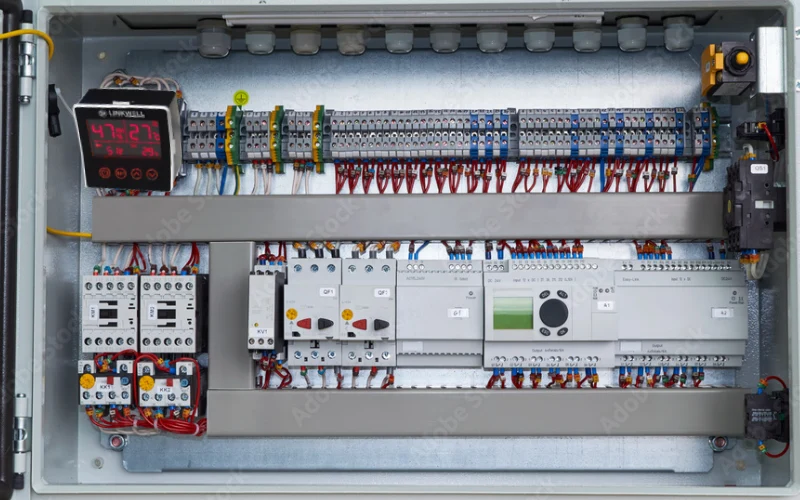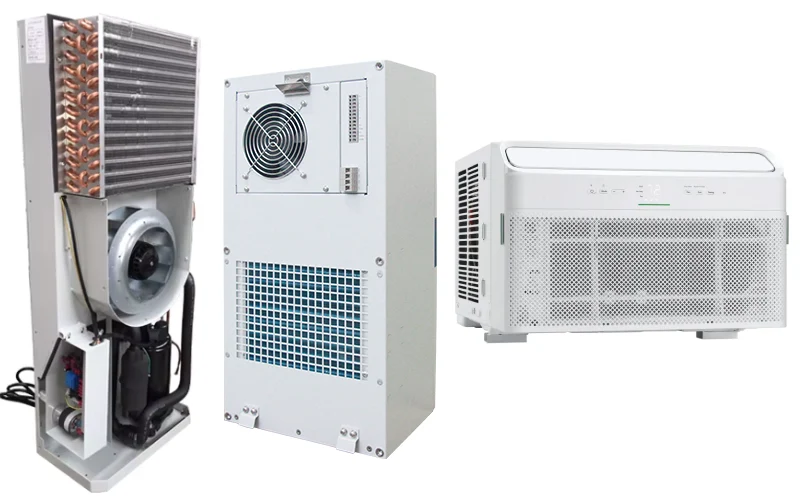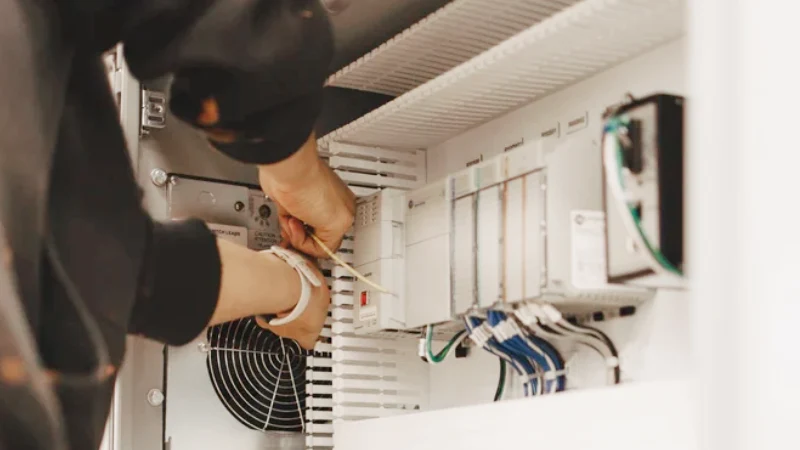If you’ve ever wondered what are the functions and applications of the terminal-box in electrical systems, you’re not alone. Terminal boxes keep your electrical connections safe and organized, helping prevent hazards and making sure everything runs efficiently. They use advanced materials that stand up to tough environments and offer flexible designs for different setups. Whether you’re working in a factory or setting up a smart home, you need solutions that meet strict safety standards. Linkwell delivers trusted terminal boxes that support reliable and secure connections every time.
Key Takeaways
- Terminal boxes connect, protect, and organize electrical wiring, ensuring safe and efficient operations.
- They shield connections from dust, moisture, and damage, reducing the risk of electrical fires and short circuits.
- Using a terminal box improves organization, making installations and troubleshooting faster and easier.
- Choose the right terminal box based on material and safety standards to ensure durability and compliance.
- Regular maintenance and proper labeling inside the box enhance reliability and reduce downtime.
Terminal Box Functions and Applications
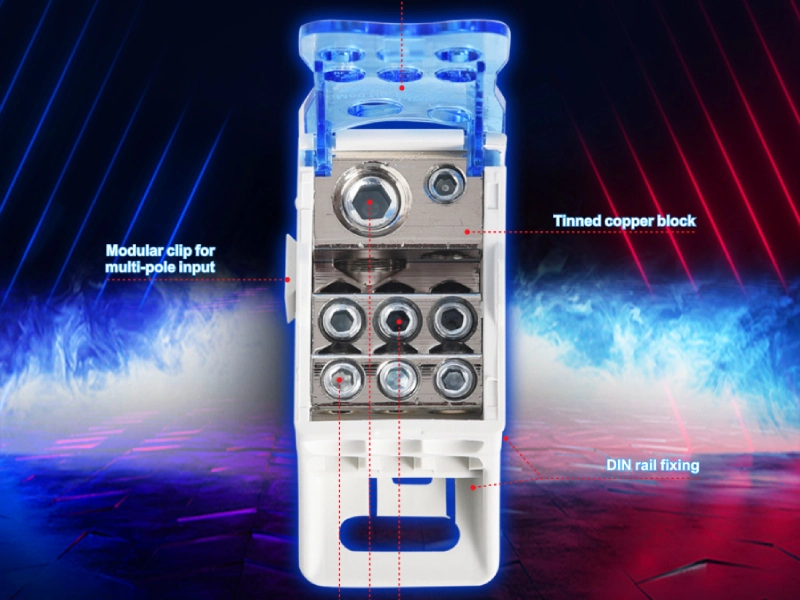
When you look at what are the functions and applications of the terminal-box, you’ll see that these small enclosures play a huge role in every electrical system. They help you manage electrical connections, keep your circuits safe, and make your wiring neat and easy to handle. Let’s break down how a terminal box works for you in real-world situations.
Electrical Connection
A terminal box acts as the main hub for your electrical connections. You use it to join wires, connect circuits, and distribute power safely. This is where Linkwell’s electrical power distribution box and Screw Terminal really shine. These products give you a secure and reliable way to make every electrical connection count.
You’ll find several types of connections inside a terminal box, such as:
- Screw Terminal Blocks: You tighten wires with screws for a strong hold.
- Spring Terminal Blocks: You get quick connections using spring force.
- Barrier Terminal Blocks: These let you connect multiple wires in one spot.
- DIN Rail Terminal Blocks: You mount these in control cabinets for easy access.
- Waterproof Terminal Blocks: You use these outdoors or in wet areas.
You can also use ring, fork, pin, blade, and push-on connectors, depending on your needs. With so many options, you can always find the right fit for your circuit or application.
Here’s a quick look at where you might use a terminal box:
| Industry | Typical Applications |
|---|---|
| Agriculture | Inter-building wiring on farms |
| Commercial/Industrial | Splicing for industrial purposes |
| Recreation | Multi-circuit wiring |
| Residential | Converting overhead to underground services |
| Construction | Commercial construction |
No matter the industry, a terminal box helps you distribute power and keep your electrical system running smoothly.
Protection and Safety
You want your electrical connections to stay safe, especially in tough environments. That’s where a terminal box steps in. It shields your wires from dust, moisture, and physical damage. Linkwell’s distribution box, for example, uses strong, anti-corrosion materials and meets strict standards like IEC 61439 and UL 508A. This means you get top-notch protection for every circuit.
Terminal boxes also help prevent electrical fires and short circuits. They do this by:
- Enclosing connections in a tough casing, so sparks or heat can’t reach flammable materials.
- Acting as a barrier to keep dust and water away from your wires.
- Meeting safety codes, like the National Electrical Code, which sets rules for size, grounding, and installation.
You’ll also see terminal boxes with features like proper grounding and secure locking. These details make your electrical system safer and more reliable.
Here’s a table of common safety standards for terminal boxes:
| Standard | Description |
|---|---|
| ATEX Directive | For EU products, requires technical documentation and quality assurance. |
| IECEx System | Global certification with IEC testing and facility quality checks. |
| UL/CSA | North American standards, including UL 1203 and CSA C22.2, plus inspections. |
When you use a terminal box that meets these standards, you lower the risk of accidents and keep your power flowing safely.
Organization and Management
If you’ve ever opened a messy electrical panel, you know how important organization is. A terminal box helps you manage electrical connections by keeping wires neat, labeled, and easy to trace. This makes installation, upgrades, and troubleshooting much faster.
Let’s see how a terminal box helps you stay organized:
| Benefit | Description |
|---|---|
| Space-saving | Fits more connections in less space, perfect for tight spots. |
| Enhanced organization | Lets you group circuits and label wires for easy tracking. |
| Reduced wiring errors | Color-coded or numbered terminals cut down on mistakes. |
| Time-saving installation | You can identify and connect wires quickly. |
| Improved airflow and cooling | Compact design keeps components cool and working well. |
| Flexibility and modularity | You can add or change circuits as your needs grow. |
| Reduced maintenance downtime | Organized layout means faster repairs and less downtime. |
| Safety and reliability | Secure connections prevent accidental contact or shorts. |
| Higher terminal density | Handles more wires in a smaller box. |
| Potential cost savings | Saves money by cutting installation and maintenance time. |
When you use Linkwell’s distribution box or Screw Terminal, you get even more benefits. These products offer robust design, high reliability, and vibration resistance. You can use them in control panels, power distribution units, or building automation systems. They make it easy to manage electrical connections, no matter how complex your setup gets.
So, what are the functions and applications of the terminal-box? You use it to connect, protect, and organize your electrical system. It keeps your circuits safe, your wiring neat, and your power flowing without a hitch. Whether you’re working in a factory, a farm, or a smart building, a terminal box is your go-to solution for reliable electrical connections and efficient distribution.
Access Terminal Box in Industrial Use
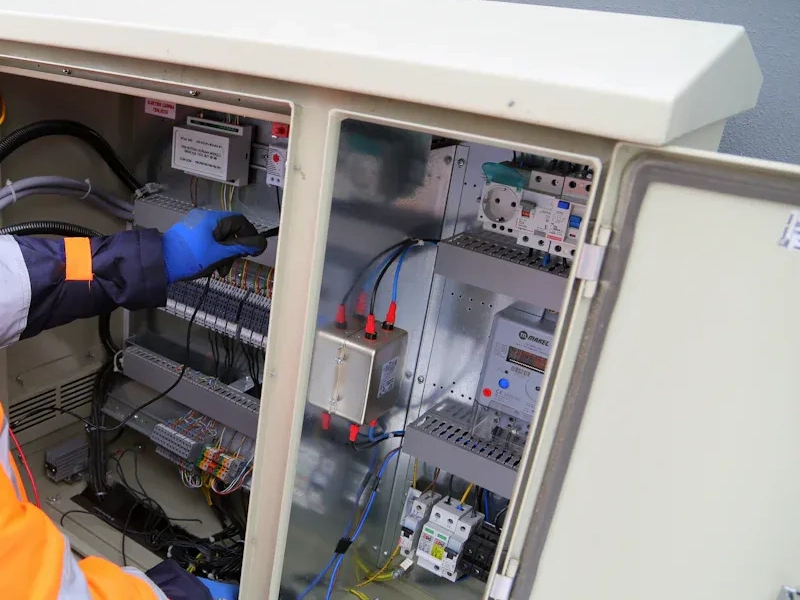
Role in Control Cabinets
When you work with control cabinets, you need a safe and organized way to handle all your electrical connections. An access terminal box gives you just that. It keeps your wires, terminal blocks, and cable ends protected from dust, moisture, and accidental bumps. You can rely on Linkwell’s distribution box and Screw Terminal to make your electrical system both neat and secure.
Here’s how an access terminal box helps you in control cabinets:
- It provides a safe and organized space for all your electrical connections.
- It houses wire splices, terminal blocks, and cable terminations, keeping them away from harsh environments.
- It makes troubleshooting and maintenance much easier, so you can fix problems fast.
You can also upgrade or change your setup without a hassle. The modular design of a distribution box lets you add or remove circuits as your needs change. The sturdy enclosure can handle heavy loads and keeps everything in place.
| Characteristic | Benefit |
|---|---|
| Modular design | Easy to modify or expand |
| Sturdy enclosure | Handles more weight and stress |
When you mount a terminal block on a DIN rail, make sure it lines up right and follows the manual. This helps your electrical power distribution stay efficient and safe.
Use in Power Panels and Telecom
You see access terminal boxes everywhere in power panels and telecom cabinets. They play a big role in keeping your circuits and power lines running smoothly. Linkwell’s distribution box is built for these tough jobs, with strong materials and smart layouts.
A typical access terminal box for these uses has:
| Feature/Requirement | Description |
|---|---|
| Enclosure Material | Metal or fiberglass for strength |
| Terminal Blocks | Multiple blocks for easy connections |
| Entry and Exit Points | Openings with cable glands for safety |
| Size | Many sizes, usually square or rectangular |
| Future Expansion | No extra space, so plan your layout carefully |
In telecom, an access terminal box protects fiber optic connections. This keeps your data moving fast and without interruptions. It also makes it simple to find and fix any issues. By centralizing your connections, you boost the reliability of your network and make sure your power and signals reach every user.
You can count on Linkwell’s distribution box and Screw Terminal to deliver strong, reliable performance in every electrical system. They help you manage electrical connections, protect your circuits, and keep your power flowing where it’s needed most.
Choosing the Right Terminal Box
Material and Safety Standards
When you pick a terminal box, you want it to last and keep your electrical system safe. The right material makes a big difference. For harsh environments, stainless steel resists corrosion, while polycarbonate stands up to impacts. If you need lightweight options, aluminum works well. You also need to check the IP rating. An IP65 or higher rating means your distribution box keeps out dust and water, which is key for outdoor or industrial use.
Here’s a quick table to help you compare materials:
| Material Type | Advantages | Best Use Case |
|---|---|---|
| Metal | Fire resistance, durability, shielding | Industrial, high-power, EMI areas |
| Plastic | Lightweight, non-conductive, easy to install | Indoor, low-power, cost-sensitive |
| Fiberglass | UV/corrosion resistance, lightweight | Chemical plants, outdoor, telecom |
Certifications matter, too. Linkwell’s distribution box meets IEC 61439 and UL 508A standards. These certifications mean your box is tested for safety and performance. You get a stable and reliable connection, which helps with the accurate transmission of electrical signals and keeps your circuit safe.
If you work in hazardous areas, you need to look at more than just the basics. Think about explosion-proof methods, environmental conditions, and compliance with standards like ATEX. This ensures physical protection and the stability and reliability of the system.
Customization and Installation
Every project is different. Sometimes you need a distribution box that fits a tight space or handles a special type of circuit. Linkwell offers full customization, so you can choose the size, material, and layout that work best for your automated production line or fiber optic communication networks. Custom configurations help you manage electrical connections and support the normal operation of the production line.
When you install a terminal box, follow the manufacturer’s instructions. Make sure you seal the box well, especially for outdoor use. Label all cables and terminations for easy troubleshooting. Good cable management inside the distribution box prevents tangles and damage, which means better data transmission and enhanced network reliability.
Here are some tips for a smooth installation:
- Choose the right size for your circuit and power needs.
- Use proper cable management for all electrical connections.
- Inspect and clean the distribution box regularly.
- Label every termination and connection for quick maintenance.
A high-quality terminal box from Linkwell gives you good electrical connection performance, supports fiber termination, and ensures safe signal distribution. You get fewer maintenance issues, lower costs, and a box that keeps your power and data flowing for years.
You’ve seen how a terminal box keeps your circuit safe, organized, and easy to manage. Choosing a trusted distribution box from Linkwell means you get reliable electrical connections and peace of mind. Check out these quick facts:
| Metric | Value |
|---|---|
| On-Time Delivery Rate | 100% |
| Review Score | 5.0/5.0 |
| Experience (Years) | 15 |
| Staff Count | 160+ |
- Electrical boxes support fixtures and help prevent hazards.
- Proper selection gives you the best results for every project.
Pick the right solution for your needs and keep your system running strong.
FAQ
What is the main purpose of a terminal box?
You use a terminal box to connect, protect, and organize your electrical wiring. It keeps your connections safe from dust, moisture, and accidental contact. This makes your setup much easier to manage and maintain.
Can I use a terminal box outdoors?
Yes, you can. Just make sure you pick a box with a high IP rating, like IP65 or IP66. These ratings mean the box can handle rain, dust, and harsh weather. Always check the manufacturer’s recommendations for your environment.
How do I know which terminal box fits my circuit?
Start by checking your circuit’s voltage and current needs. Look at the number of wires and the space you have. Choose a box that matches your requirements and meets safety standards. If you need help, ask your supplier for advice.
Do terminal boxes make maintenance easier?
Absolutely! You can quickly find and fix issues because everything stays organized. Labeled wires and grouped connections help you trace a circuit fast. This saves you time and reduces the risk of mistakes during repairs or upgrades.

